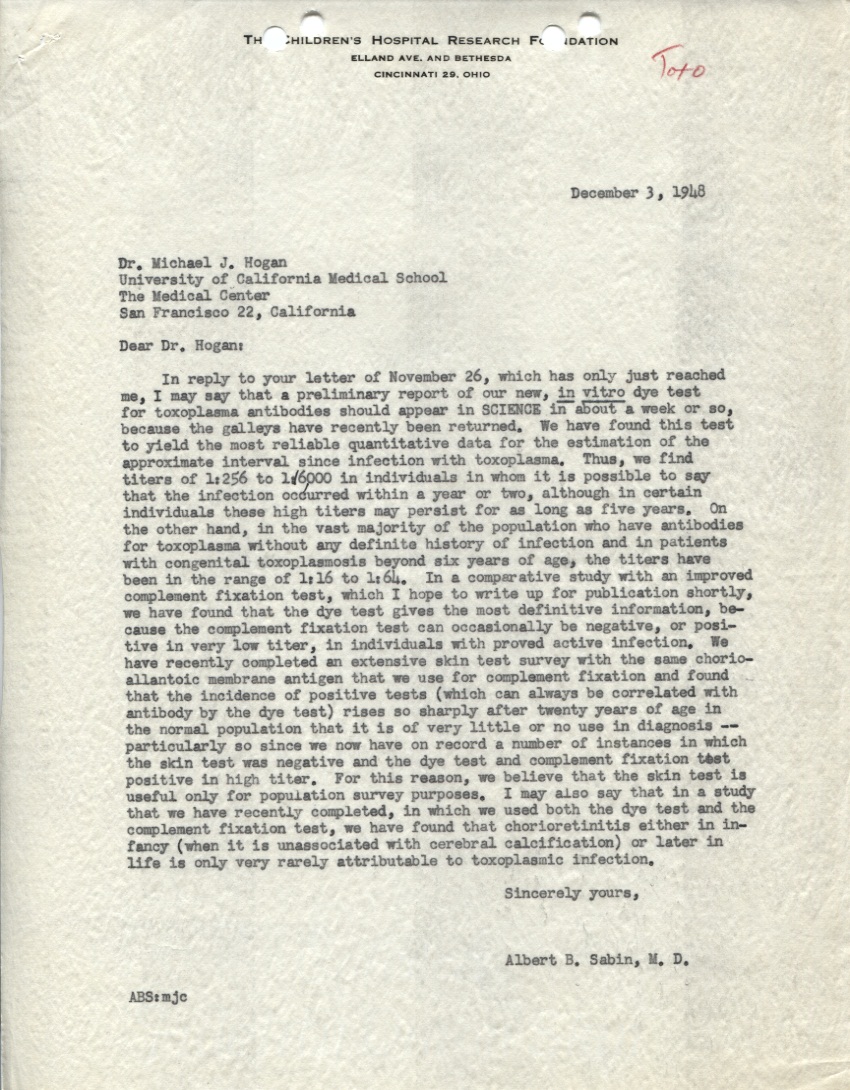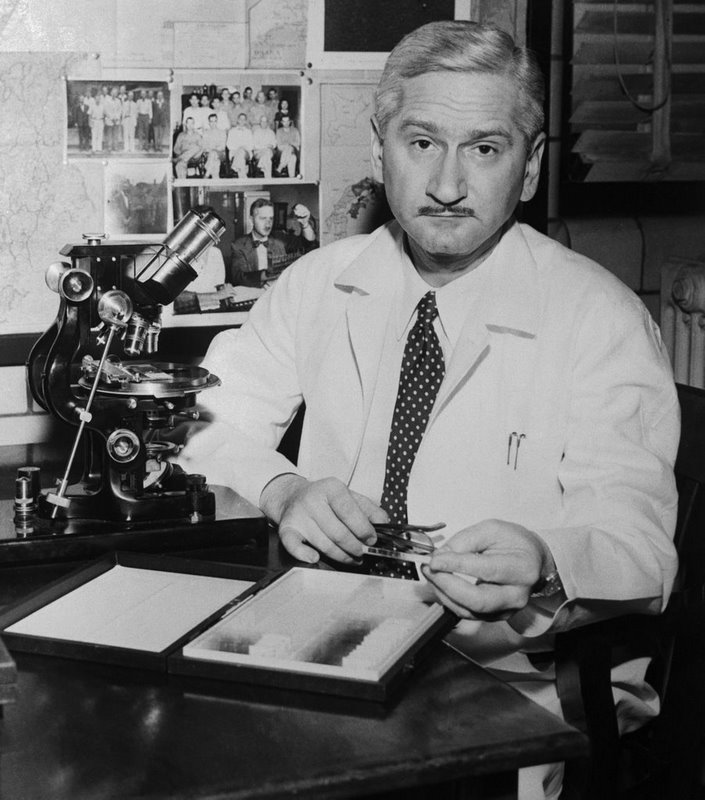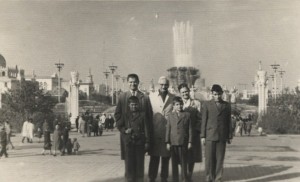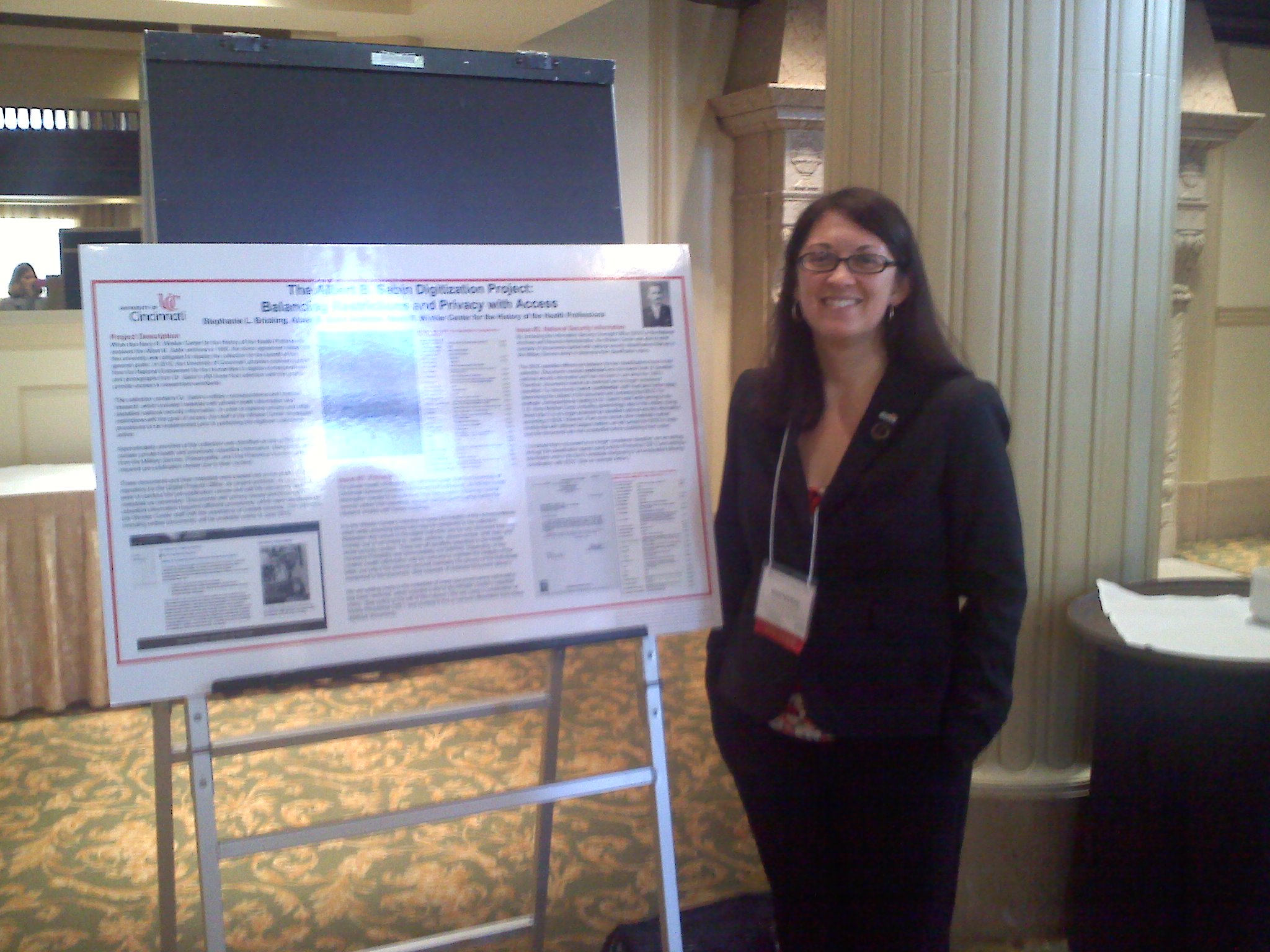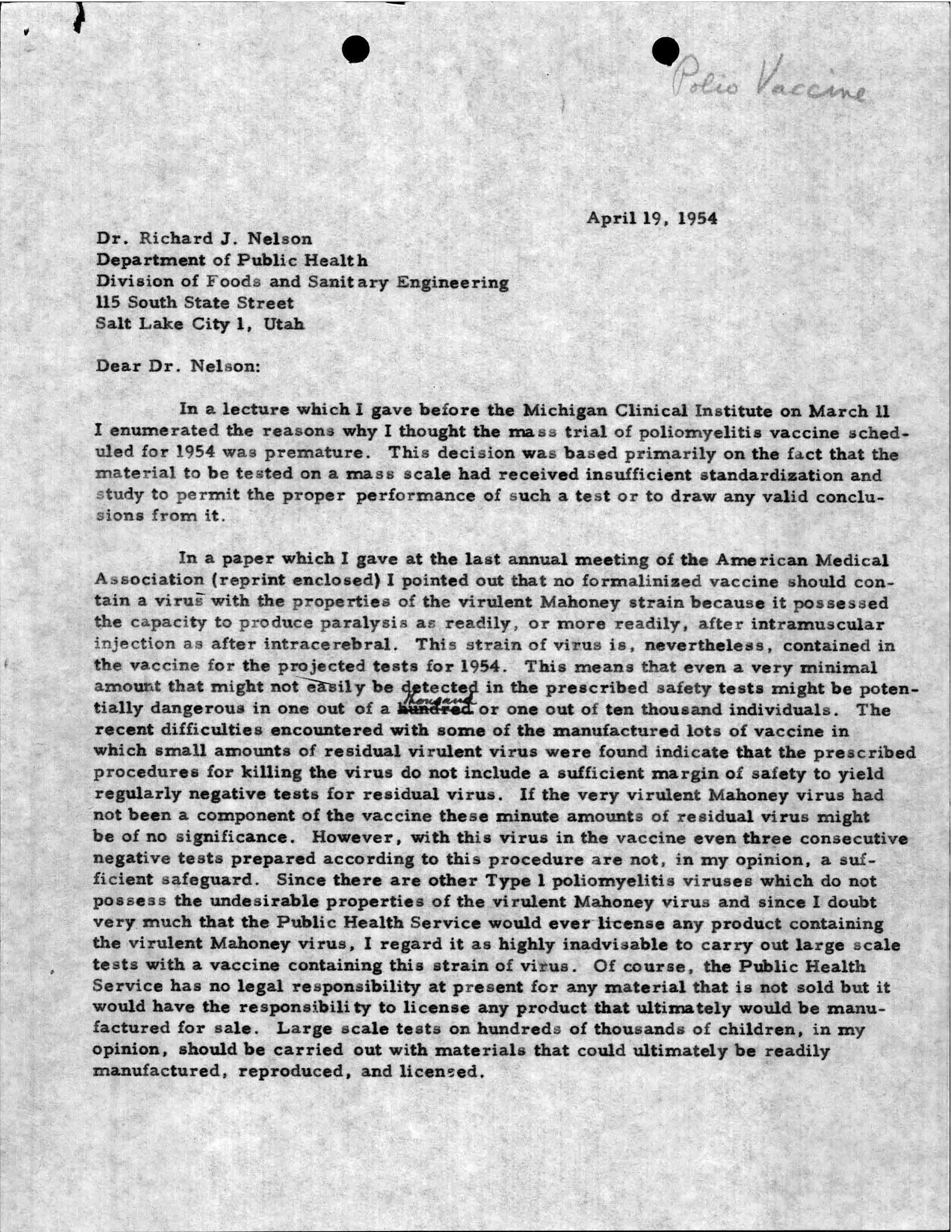Recently, I have been working with letters in the Sabin collection about toxoplasmosis, a disease that Dr. Sabin and several of his colleagues researched for quite some time. Some of this correspondence contains health information, so I have been reading letters quite closely to make sure we protect the privacy of those mentioned.
Here is some background information: Toxoplasmosis is a disease caused by the parasite Toxoplasma gondii and generally has few symptoms for those with healthy immune systems. However, those who are pregnant or have compromised immune systems are at risk for serious health problems if they are infected with Toxoplasma.[1] Many of the letters in the collection discuss congenital toxoplasmosis, which is when an unborn baby is infected with the parasite during the pregnancy, including labor and delivery. This infection can cause premature birth, as well as hearing loss, low birth weight, vision problems, seizures, and mental retardation. As you can imagine, mothers whose children were born with these types of symptoms were concerned for the health of the child, as well as concerned for their future children. Continue reading

